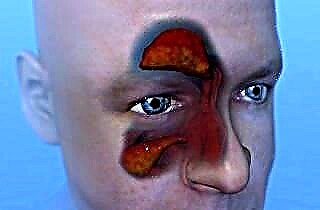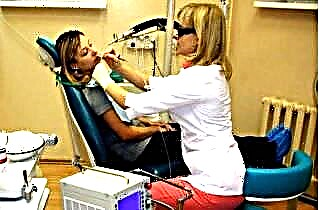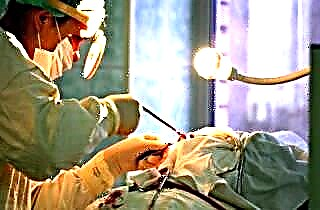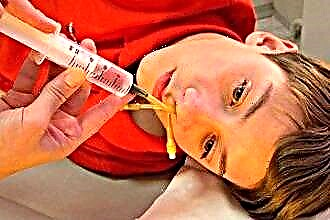Most often, cysts form in the sinuses. These are harmless tumors, they have nothing to do with oncology. However, the danger is posed by the liquid that collects in them. It can be mucous, purulent, or serous. Under certain conditions, the bubble can rupture, and its contents spread to nearby organs and tissues. This is fraught with very serious consequences, therefore, you should carefully monitor your health and the slightest changes in the patient's history, pay attention to symptoms that indicate a worsening of the condition.
Where do neoplasms come from?
 There are special glands in the sinuses that secrete mucus, which is necessary to moisturize and protect the body from pathogenic microorganisms. This mucus is drained from the sinus through special ducts during normal function. If any disorder occurs that causes edema, blockage of outflows begins to develop. In this case, the glands continue to produce a new secret, but it no longer leaves the sinuses, but accumulates in them. As a result, a bubble appears filled with liquid contents.
There are special glands in the sinuses that secrete mucus, which is necessary to moisturize and protect the body from pathogenic microorganisms. This mucus is drained from the sinus through special ducts during normal function. If any disorder occurs that causes edema, blockage of outflows begins to develop. In this case, the glands continue to produce a new secret, but it no longer leaves the sinuses, but accumulates in them. As a result, a bubble appears filled with liquid contents.
Various factors can provoke such a violation, most often they are associated with chronic irritation of the nasal mucosa. Infections spread very quickly to nearby sinuses and disrupt the functioning of their outflows. Bubbles are located in such departments:
- maxillary sinuses;
- ethmoid sinuses;
- frontal sinuses;
- sphenoid bone.
Reasons for the occurrence of the violation
Under normal conditions, cysts do not appear, outflows function correctly, remove mucus from the paranasal sinuses, aeration (natural ventilation) is well arranged in these organs, which prevents the multiplication of pathogens. However, if even one of these functions is impaired, a cyst may appear.
Factors provoking the formation of vesicles in the sinuses:
 chronic infectious ENT diseases and frequent acute diseases;
chronic infectious ENT diseases and frequent acute diseases;- allergy accompanied by rhinitis;
- improper structure of the nose or nasal septum;
- dental disorders (inflammation in the upper jaw, pulpitis, deep caries, etc.);
- getting serious injuries to the nose;
- anatomical features of the paranasal sinuses;
- chronic diseases of the nasopharynx;
- the presence of polyps in the nose.
Any of these disorders can cause cysts to form. It is very important to treat infectious lesions on time, undergo therapy to the end and prevent re-infection. It is this type of violation that most often provokes the accumulation of fluid in the sinuses.
If you have a tendency to develop cystic neoplasms, get regular check-ups with an otolaryngologist.
Symptoms and features
Typically, a cyst in the nose does not cause symptoms in the early stages. At first, when the growth is still small enough, discomfort, pain, or breathing problems are not noticed. The fact that the patient is unaware of the presence of cysts in his body greatly complicates the diagnosis. The manifestations of the disease occur only when the bubble begins to rapidly increase in size, it often happens that it completely fills the entire sinus. Such changes in the patient's condition can indicate a violation:
- Problems with nasal breathing. A person cannot breathe air normally when the cyst begins to increase in size. With prolonged neglect of the disease, oxygen starvation can develop, it leads to disruption of the cardiovascular system and other organs. It is also possible to completely stop breathing during sleep in severe, advanced cases.
- Nasal congestion. Due to the malfunctioning of the paranasal sinuses, nasal congestion appears, it can be periodic at the onset of the disease, but when the cyst enlarges, it becomes permanent.

- Pain syndrome. The pain is felt in the area of the affected sinus, but it can be given to the frontal part, to the jaw, to the head, and to the eyes. When pressing on the area of the cyst, the pain syndrome increases, in the advanced stage of the disease it becomes constant and intrusive.
- Rhinitis. An increase in the secretion of the mucous glands is also inherent in this disease. However, the discharge is more scarce than with ordinary rhinitis, they can appear periodically and only in the last stages do they become abundant and constant.
- Recurrence of inflammation. Sinusitis and rhinitis with tumor formation often recur. This is due to constant pressure inside the affected sinuses and irritation of the mucous membranes.
- Pain with changes in atmospheric pressure. This symptom is the most prominent manifestation of a cyst. During diving, being on the subway or flying on aircraft, the pain in the affected area increases sharply, when the pressure levels off, it disappears.
Disease detection
It is not so easy to identify cysts in the sinuses of the nose, since they simply do not manifest themselves with any symptoms for a long time. Often, the diagnosis occurs randomly, when a patient comes with specific complaints and suspicions of other diseases, and when conducting apparatus studies, a neoplasm is found in him.
However, it happens that a visit to a doctor is associated precisely with the presence of bubbles, in which case the following diagnostic methods will be appropriate:
- Radiography. It helps to detect only large neoplasms, in relation to relatively small cysts, it is ineffective. In the picture, the doctor can see a shadow with clearly outlined contours in the paranasal sinus - this is a cyst.
 Hymorography. The introduction of contrast fluid into the lesion site is an effective research method. With its help, you can find out not only the exact location of the neoplasm, but also its size and shape.
Hymorography. The introduction of contrast fluid into the lesion site is an effective research method. With its help, you can find out not only the exact location of the neoplasm, but also its size and shape.- Magnetic resonance imaging and computed tomography. The most accurate diagnostic methods, during which the doctor clearly sees all the features of the neoplasm, its location, size and shape. Also, with the help of CT and MRI, it is possible to recognize whether the cyst is false (caused by inflammation of the upper jaw) or true.
- Endoscopy. The study has a great advantage over other methods, with its help you can see on the monitor a clear image of all the inner surfaces of the nose and sinuses. The doctor can immediately identify not only a cyst, but also concomitant diseases, for example, polyps.
- Biopsy. By separating a tiny particle of a neoplasm, doctors perform various laboratory tests. They help to exclude or confirm oncology, to do biochemical, cytological and bacteriological research.
- Orthopanoramography. A panoramic image of the jaw is taken in case of suspicion of the odontogenic nature of the cyst, i.e. associated with dental diseases.
Troubleshooting methods
If the nasal passage is not affected by complications such as chronic infections, and the cyst is small, then it may not be treated at all. While the patient does not have specific complaints, he is shown to undergo an examination every six months, with the help of which doctors will be able to control the course of the disease. When there is an increase in the size of the neoplasm, the following measures are taken:
 Medication. It can only give an effect if the neoplasm is small. Patients are prescribed special medications to relieve symptoms. It can be vasoconstrictor drops, glucocorticosteroids, antihistamines.You can also pierce the bubbles and extract the liquid from them. Such manipulations give only a short-term effect, and the disease returns after a while.
Medication. It can only give an effect if the neoplasm is small. Patients are prescribed special medications to relieve symptoms. It can be vasoconstrictor drops, glucocorticosteroids, antihistamines.You can also pierce the bubbles and extract the liquid from them. Such manipulations give only a short-term effect, and the disease returns after a while.- Surgical intervention. The cyst can be completely eliminated only through a special operation. Now there are 3 main ways to remove a neoplasm:
- classical resection;
- endoscopic removal;
- laser removal.
The classical method is considered the most traumatic, as it affects a large number of healthy tissues and requires a long period of rehabilitation. Laser technology helps to avoid complications such as edema and bleeding, but also does not allow targeting only the neoplasm.
Endoscopic surgery is the safest and most effective method of correcting the problem. With the help of miniature instruments, only the affected area is removed, no stitches and wounds.
Let's summarize
Symptoms of the presence of cysts in the nose may not appear at all until the neoplasm begins to grow and fill the paranasal sinuses. However, there are a number of special signs that indicate the presence of this violation. If you find any signs that indicate the presence of ENT diseases, you should immediately go to the doctor.
It is possible to diagnose a cyst only when conducting special studies, after which the doctor decides which therapy will be most effective and whether it is worth doing the operation. Do not ignore this violation, it can have serious consequences.

 chronic infectious ENT diseases and frequent acute diseases;
chronic infectious ENT diseases and frequent acute diseases; Hymorography. The introduction of contrast fluid into the lesion site is an effective research method. With its help, you can find out not only the exact location of the neoplasm, but also its size and shape.
Hymorography. The introduction of contrast fluid into the lesion site is an effective research method. With its help, you can find out not only the exact location of the neoplasm, but also its size and shape. Medication. It can only give an effect if the neoplasm is small. Patients are prescribed special medications to relieve symptoms. It can be vasoconstrictor drops, glucocorticosteroids, antihistamines.You can also pierce the bubbles and extract the liquid from them. Such manipulations give only a short-term effect, and the disease returns after a while.
Medication. It can only give an effect if the neoplasm is small. Patients are prescribed special medications to relieve symptoms. It can be vasoconstrictor drops, glucocorticosteroids, antihistamines.You can also pierce the bubbles and extract the liquid from them. Such manipulations give only a short-term effect, and the disease returns after a while.

